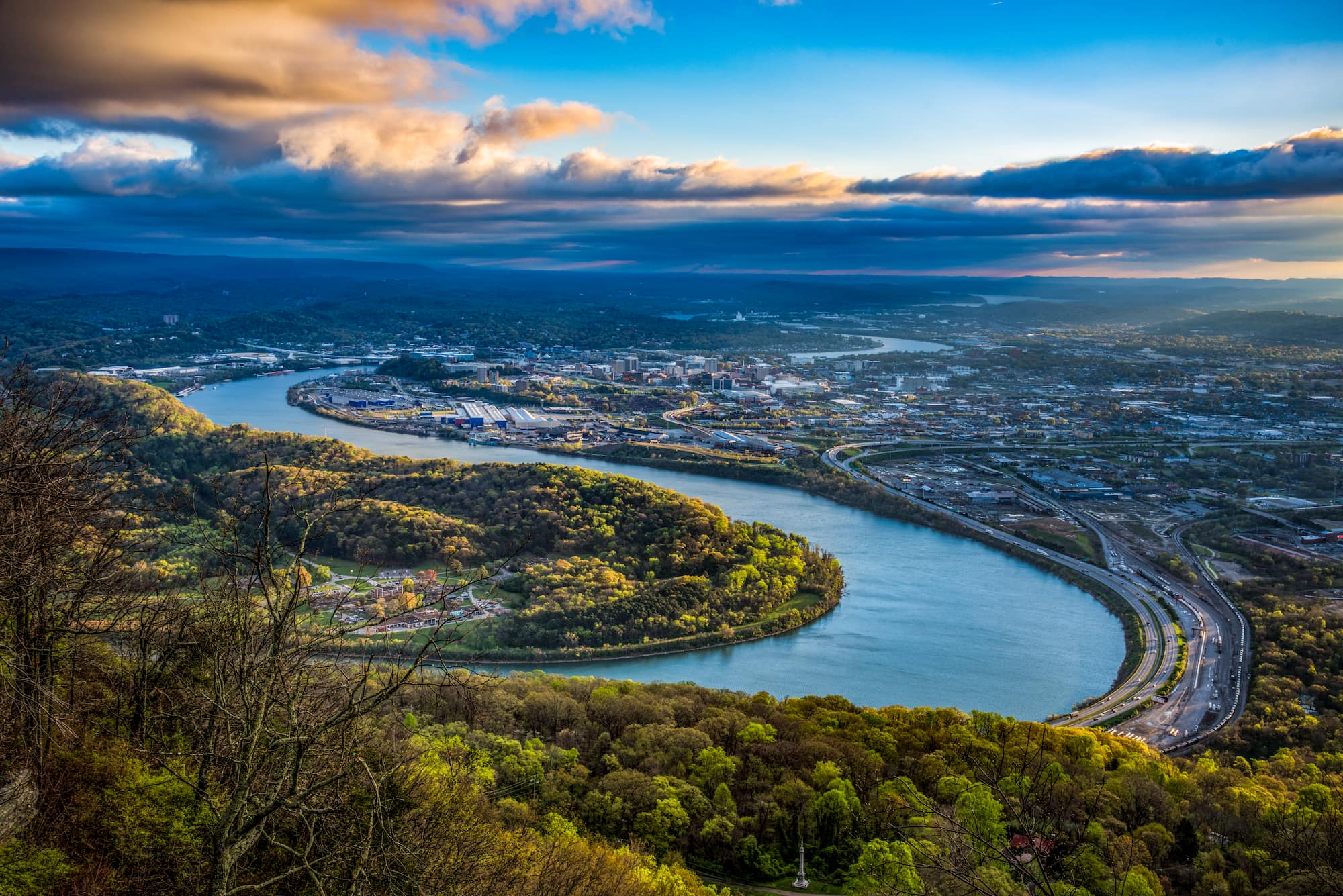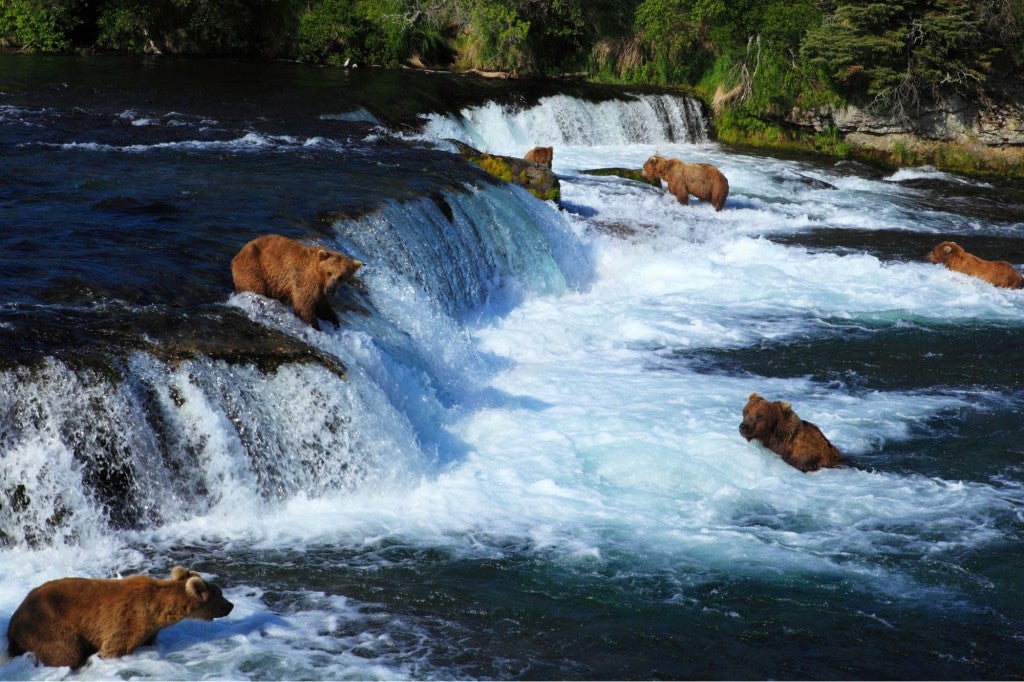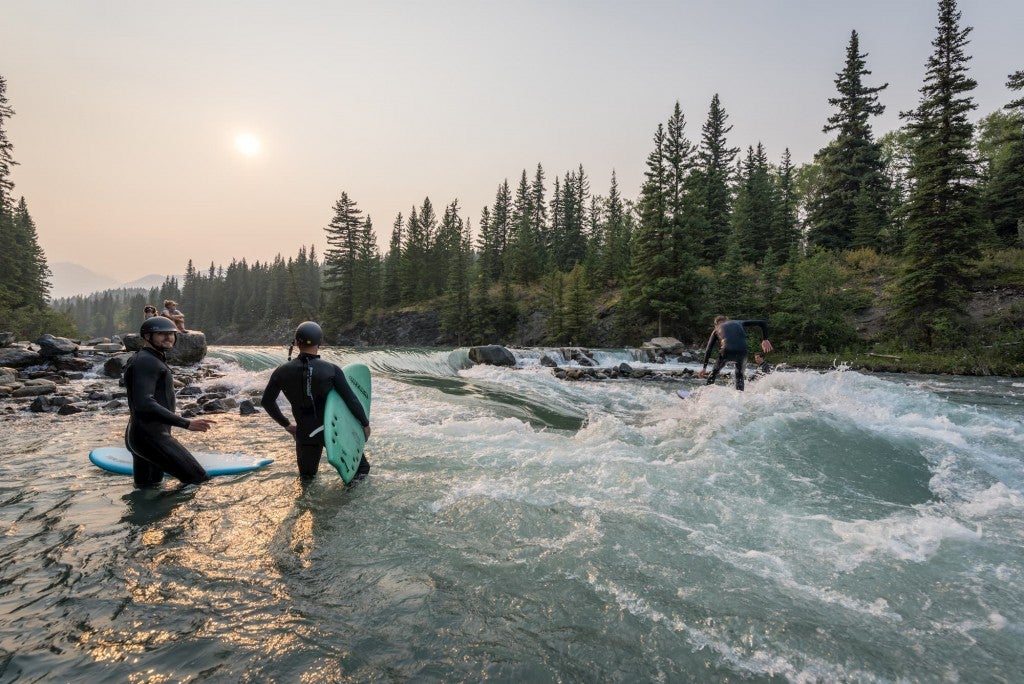This article about Chattanooga camping was brought to you by Midland, whose walkie talkies keep you connected, whether you’re reminding your camping buddy to grab your extra socks from the car or touching base while backpacking.
For decades, Chattanooga, Tennessee was best known nationally as the place that news anchor Walter Cronkite famously called “the dirtiest city in America.” The grand train station, once known around the world as the “Chattanooga Choo Choo” from the 1941 musical “Sun Valley Serenade,” shuttered in the midst of a decaying downtown corridor. The city’s picturesque riverfront was lined with factories and foundries that, by the 1980s, were largely in decline or abandoned.
No one would have predicted that Chattanooga would one day be named Outside Magazine’s Best Town Ever—not once, but twice.
A determined effort in the late 80s and early 90s to clean up the riverfront brought new life to Chattanooga, attracting new visitors to such scenic vistas as Sunset Rock, the Ocoee River, and the Tennessee River Gorge. The construction of the Tennessee Aquarium encouraged a new civic identity as a conservation-minded tourist destination. And over the next twenty years, the Scenic City successfully rebranded itself first as an arts town, then Silicon Gorge tech hub, and eventually an outdoor destination.
Today, tourists driving to the Tennessee Aquarium will cruise by the High Point climbing gym, which includes outdoor routes on the facade of a downtown parking garage. There are a slew of Boulder and Asheville-worthy breweries slinging beers named for the area’s many scenic wonders, an expansive pedestrian river walk that runs from the base of Lookout Mountain to the Chickamauga Dam, a bouldering gym, SUP and bike shops, a climber hostel, and even a boutique treehouse hotel. And that’s just the tip of the proverbial iceberg.
Whether you’re popping up from Atlanta for a weekend, flying in to see what all the fuss is about, or are just looking for a new best kept secret in your hometown, the hardest part of your visit will be deciding which outdoor playground to see first. To help narrow down your options, we rounded up some of the best Chattanooga camping options, and what’s near each destination.
Where to Find Camping Around Chattanooga, Tennessee
While there’s plenty of unofficial Chattanooga camping treasures hidden throughout the area— the Blair Witch-esque boat-in camping on Maclellan Island in the middle of the Tennessee River— we’ve stuck to the official sites beloved by campers on The Dyrt, like you.
1. Raccoon Mountain
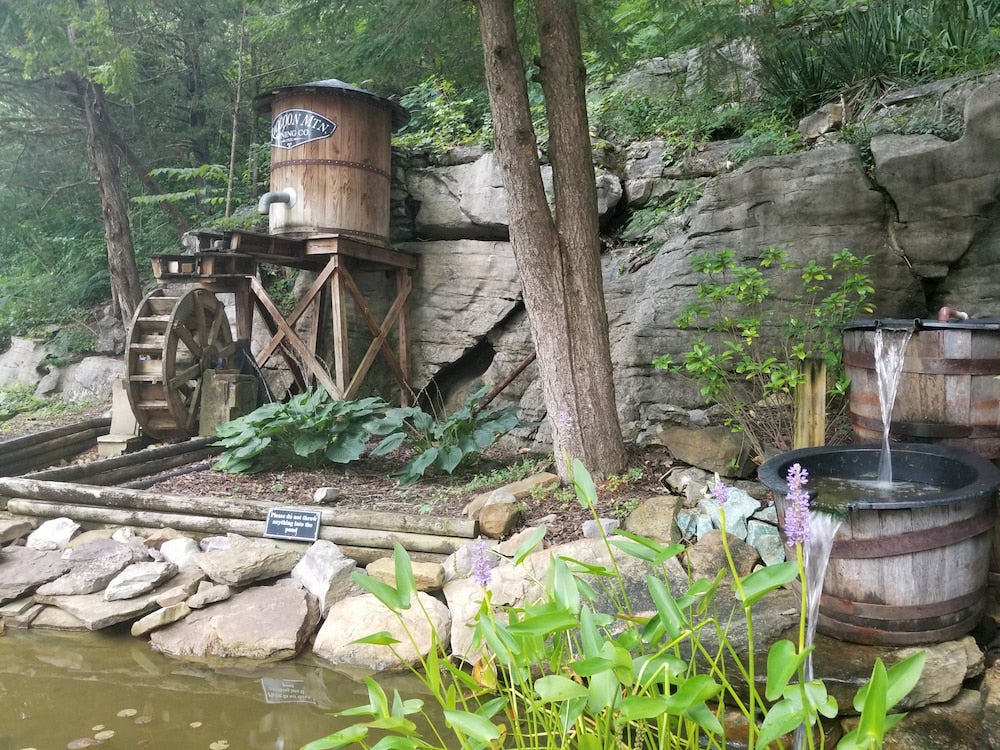
Photo from The Dyrt camper Malaney H.
The caverns inside Racoon Mountain were first developed into a tourist attraction in the early 1930s by the same spelunker, Leo Lambert, who had successfully discovered Ruby Falls cavern on Lookout Mountain a year prior. That underground cavern and waterfalls was named for Lambert’s wife Ruby, who invented miniature golf at their other venture, Rock City. Thanks to a clever advertising campaign that involved painting barns throughout Tennessee and 18 other states with the slogan “See Rock City,” the Lamberts’ tourist attraction put Chattanooga on the map. Rock City even garnered a cameo in Neil Gaiman’s fantasy novel American Gods, which eventually became a prestige Showtime series.
Unlike Ruby Falls and Rock City, however, which catered to tourists arriving by automobile but lodging elsewhere, Racoon Mountain eventually included an RV park and primitive campground in addition to the cave itself. Just eight miles (or about fifteen minutes) from downtown Chattanooga, it’s easily one of the most convenient places to go camping, with lots of family-friendly amenities to boot.
Today the Chattanooga camping options at Racoon Mountain include full hookups, water and electric RV sites, and primitive tent sites, as well as pet-friendly cabins with full kitchens, TVs, grills, decks, and full baths. Full hookup RV sites include internet access and dump services. And the whole campground has access to a Bark Park for your four-legged friends, fitness center, salt water pool, and playground.
“This campground is beautiful in the middle of the mountains. It is unique as well, in that there is a cavern entrance right on site. You are able to do a quick 45 minute knowledge tour or you can do a muddy tour, which is longer and takes you further into the cavern.” –The Dyrt camper Malaney H.
2. Prentice Cooper State Forest
Prentice Cooper is one of the prettiest areas within thirty minutes of downtown, with stunning views from Snooper’s Rock that aren’t marred by the same kind of big box development you can see from other popular viewpoints like Lookout Mountain’s popular Sunset Rock. Instead, you get much more of a backcountry feel, with some nice amenities like a shooting range and miles of OTV trails.
You’re as likely to get invited to go four-wheeling with strangers here as you are to encounter a couple wagons pulled by mule teams, or just some friends out for a hike. It’s even possible you won’t see anyone at all, with how much room there is to spread out here. Camp if you find a spot that looks pleasant— dispersed is the name of the game in Prentice Cooper.
“Expansive forest with gorgeous fall colors. True to its name it is ‘dispersed’ with no ‘main attraction’ site- which is actually awesome if you’re looking for seclusion, since people are spread out across the area.” –The Dyrt camper Kelly M.
3. Lookout Mountain West KOA
Just south west of Chattanooga is Lookout Valley, a pretty stretch roughly equidistant between the Civil War battlefields and historic neighborhoods on top of Lookout Mountain and the North Georgia wonders of Cloudland Canyon State Park. Just twenty minutes from downtown, it’s also convenient to the Wilderness Outdoor Movie Theater, a classic drive-in and open-air cinema.
If you’re visiting Chattanooga on the first and last Saturdays of each month from December through April, and first and last weekends from May through November, you can pay a visit to the beautiful Lula Lake Land Trust. This pretty preserve of the Rock Creek watershed, which feeds Lula Lake and Lula Falls, limits access as part of the Land Trust’s conservation efforts. There are gorgeous hiking trails throughout the LLLT, and the space has even been used to host a pop-up dinner party through the Scenic City Supper Club.
Camping, however, is not allowed— hence why you might want to reserve a spot at Lookout Mountain West KOA. You’ll find tent, hammock, and RV sites, as well as free high speed WiFi, cable-TV, recently renovated restrooms, a salt water swimming pool, jump pad, gem-stone panning, field for throwing a frisbee or ball around, and even a Mini-Marshmallow Shooter “Shootin’ Gallery.”
“Close to Cloudland Canyon & Lookout Mountain & Chattanooga! Clean facility and friendly staff! The view from the campground alone was beautiful! Also close to Raccoon Mountain! Could spend 4-5 days here and have a lot to do! We wished we had more time!” –The Dyrt camper Molly M.
4. Cloudland Canyon State Park
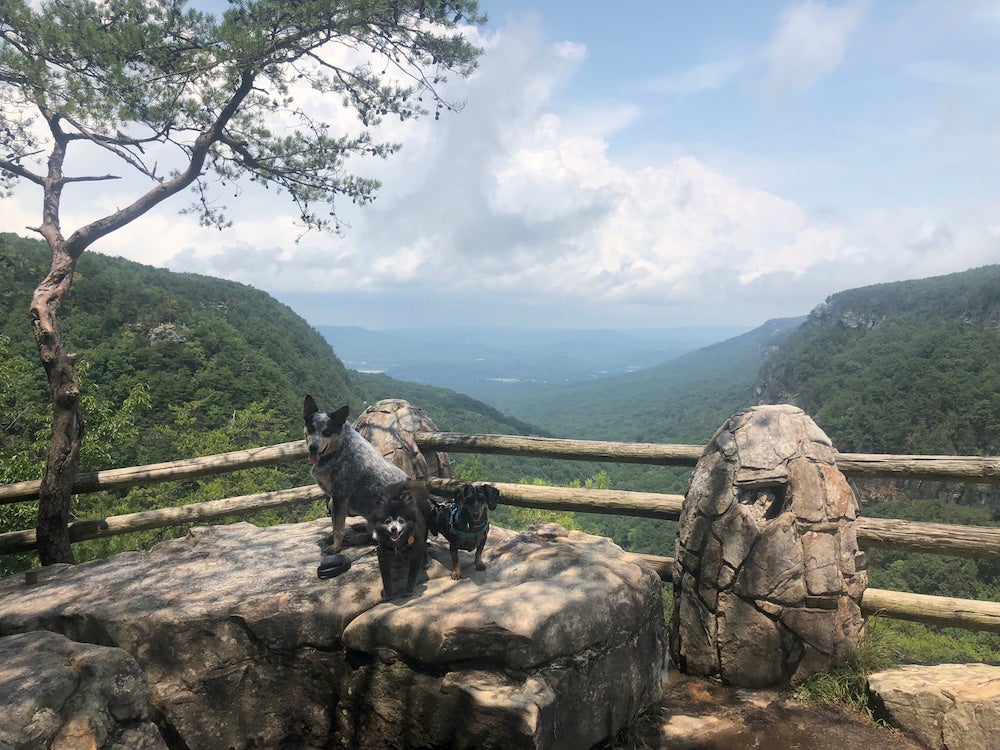
Photo from The Dyrt camper Shelly S.
Perhaps the crown jewel of the Chattanooga camping experience, Cloudland Canyon State Park is a real treat only thirty minutes from downtown. Here, creeks that have flowed down from the top of Lookout Mountain (the same mentioned in Martin Luther King’s famous “I Have a Dream” speech) and the Cumberland Plateau for millions of years have carved thousand foot deep gorges on their way to form Sitton Gulch Creek.
Eventually the many creeks and waterfalls that make Cloudland Canyon such a beautiful outdoor destination join Lookout Creek, a paddler’s favorite, before that it turn finds its way to the Tennessee River. Here you can appreciate not only ancient geology and hydrology, however, but also glute-buster hikes and a wide variety of camping options.
The yurt camping in Cloudland Canyon is always immensely popular, but so are the 16 cottages, 72 tent, trailer & RV campsites, 30 walk-in campsites, 13 backcountry campsites, 4 pioneer campsites, and group lodge. There are 30 miles of mountain bike trails, caves for spelunkers up to a technical trip, over sixty miles of hiking trails, over fifteen miles of equestrian trails, fishing holes, disc golf and geocaching. There’s even a handicapped accessible trail so campers with disabilities can take in the views, too.
“Cloudland Canyon has beautiful trails and scenery especially the waterfalls but be prepared for some intensive hikes. As a family we camp as much as possible and the kids and dogs definitely loved these trails also Chattanooga was really close and we visited the aquarium It was definitely worth the trip.” –The Dyrt camper Karen L.
5. Shell Mound Campground at Nickajack Dam
The section of the Tennessee River that runs through Chattanooga is actually bookended by the Chickamauga and Nickajack Dams, products of the Tennessee Valley Authority’s efforts at flood control in the 1920s and 30s. Prior to the construction of these dams, and the vast reservoirs behind them, Chattanooga regularly flooded badly enough for business owners to raise the elevation of downtown by one story. The top of Cameron Hill, now home to the Blue Cross Blue Shield campus, was shaved and the soil used to raise the streets to what had once been the second story.
Centuries before the valley around Nickajack was permanently flooded to save Chattanooga, however, it was home to prominent Cherokee villages and the great Native leader Dragging Canoe. Civil War troops used area caves to mine saltpeter for their ammunition. And the poor mountain people whose lives were initially documented by Chattanooga nature writer Emma Bell Miles made their living here, fishing, hunting and farming.
Today, Nickajack is an outdoor playground for boaters, anglers, and campers looking for Chattanooga camping options, about thirty minutes from the city. Right on the water, it’s hard to beat Shell Mound Campground if you’re looking for somewhere simple to pitch your tent and drop your line in the water. The lake is full of bass, crappie, walleye, and catfish, and the sites are quiet, if not totally secluded. And if the fish aren’t biting, you’re still close enough to Jasper and South Pittsburgh to pop out for provisions.
“I-24 crosses an epically picturesque section of Nickajack Lake. The primitive campground is located behind the RV Campground and separated by trees from the RV’s, in a large field with an awesome view of the lake. There are picnic tables and fire rings. The day use area is very nice, manicured with a swimming area, dock and boat ramp. The water was surprisingly clear and COLD!” –The Dyrt camper Shelly S.
6. Marion County Park
Within sight of Shell Mound is Marion County Park, a pretty little campground with an emphasis on RV sites situated on a peninsula sticking out into Nickajack Lake between Dixie Highway and I-24. This isn’t the wilderness by any means, but the lake views are nice for a convenient campground thirty minutes outside a mid-size city, and for a county campground the amenities are on point. And it’s hard to beat the positioning if you’re hoping mainly for a boating basecamp.
“Beautiful campsite! Clean, and well maintained. Tent camping along the edge of the river. Fire pits or grills, picnic tables, clean bathroom, and hot showers. If you are a light sleeper, the traffic noise from the highway might be disturbing. Good fishing. It was a nice overnighter on our way North.” –The Dyrt camper Deborah H.
7. Lockharts Arch Shelter
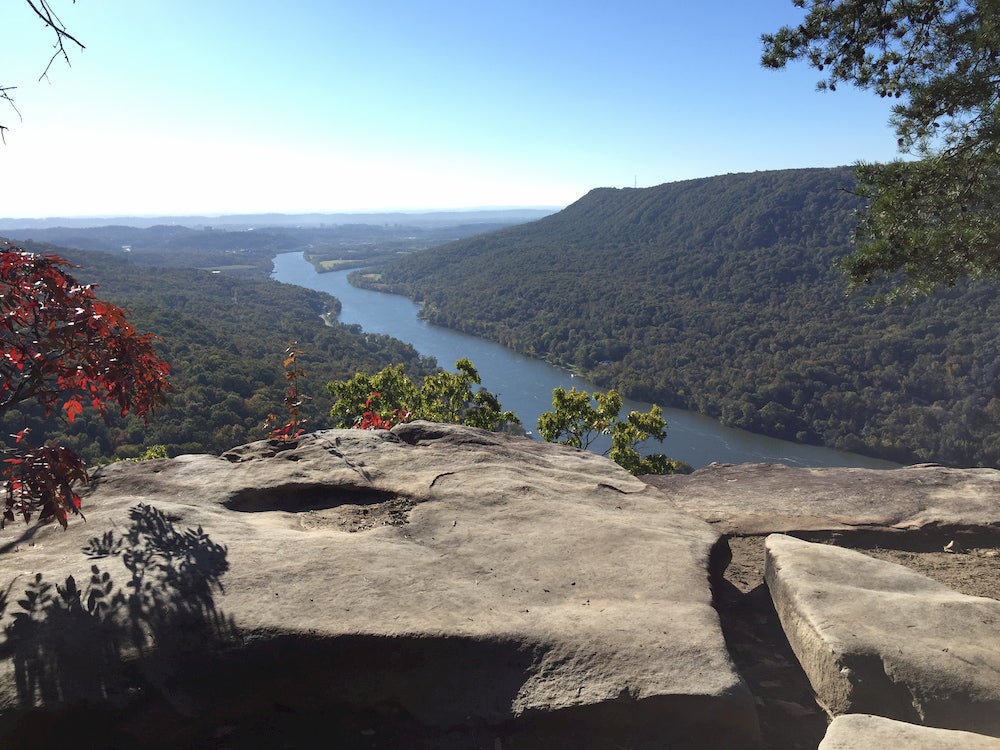
Photo from The Dyrt camper Stephanie J.
One of the things that makes Chattanooga camping so easy, and the city so great for outdoor pursuits in general, is how many of the best trails and campsites are easily accessible from downtown. Lockharts Arch Shelter is exactly one of these—a campsite half an hour’s drive from Chattanooga (shorter depending on which side of the river you’re starting from) and a short enough hike you could make a weeknight excursion of it, yet where you’re unlikely to have much company once the daytime hikers have cleared out.
Lockharts Arch Shelter also happens to be the southernmost campsite on the Cumberland Trail, which actually connects the more suburban trails near the Alexian Village retirement community like Bee Branch and Rainbow Loop to the more remote Prentice Cooper State Forest. But because Lockhart’s Arch Shelter is only 1.8 miles from Signal Point, which is also the southern terminus of the CT, you won’t be in for a long hike to reach your destination if you’re looking for a quick overnight getaway. Just plan on getting a ride— overnight parking isn’t allowed in the Signal Point parking lot.
Along the way, you’ll have a chance to admire Julia Falls and Middle Creek before climbing up and out of the gorge. Just be sure to bring plenty of water— you’re close to the neighborhoods of Signal Mountain, most of which operate off septic systems. The flip side is that you can easily pick up and pack in a pie from The Pizza Place on Signal Mountain, a great local joint.
“The shelter is very small, covered on three sides, with enough room to fit 2-3 adults. It has a small shelf to store gear, and a few nails to hang bags on, but does not have anything hanging from the ceiling to help protect your food from mice, so take appropriate food storage measures.” –The Dyrt camper Stephanie J.
8. Harrison Bay State Park
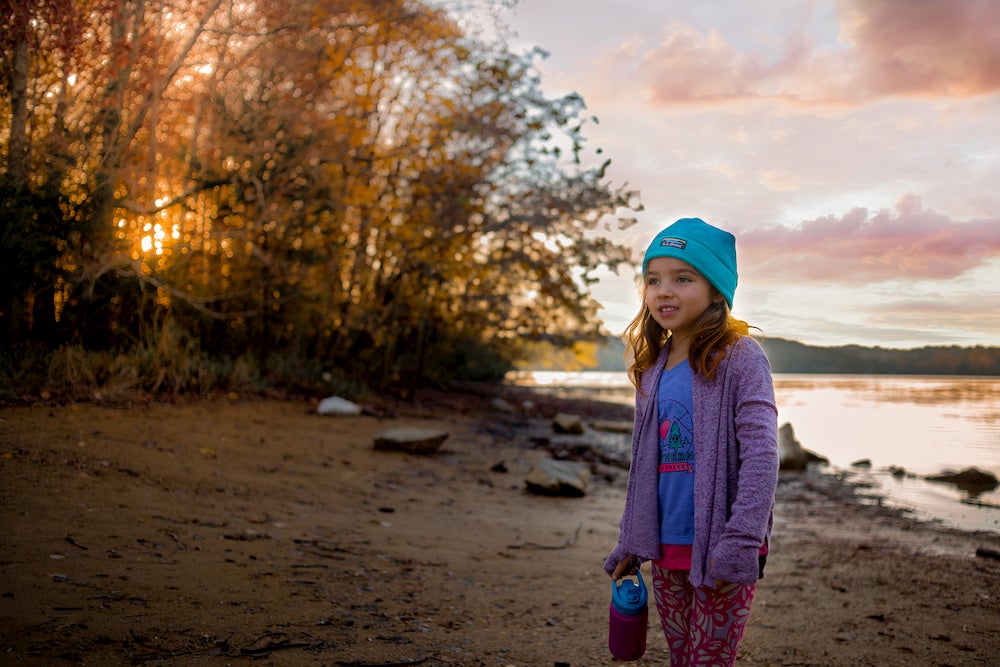
Photo from The Dyrt camper Stephanie J.
One of a few Chattanooga camping options that offer a campground swimming pool to help guests beat the Southern heat, Harrison Bay State Park also features a lake for swimming and boating. Situated on Chickamauga Lake behind the northern dam that protects Chattanooga’s downtown, Harrison Bay State Park is a favorite for boaters, anglers, and families looking for a day out just over thirty minutes northeast of downtown.
In addition to camping, Harrison Bay’s amenities include fishing, boating, hiking, a playground, a restaurant, pool, interpretive center, nature viewing platform, and several picnic pavilions. There are several restaurants in the area, too, including an especially nice Amigo’s Mexican Restaurant close to a marina overlooking the bay. With so many places to put in and take advantage of the water, you’re likely to find kayakers and stand up paddle board enthusiasts— even SUP yoga classes— in addition to motor boaters.
“Two smaller islands past the campground that can be combined for a 1 mile loop. These islands make excellent places to watch the sunset; the large island closest to the marina even has a bench facing southwest for this purpose. Don’t come here looking for a wilderness experience. However for an outdoor vacation that has plenty of activities and is close to urban conveniences, Harrison Bay is an excellent choice!” –The Dyrt camper Stephanie J.
9. Skull Island
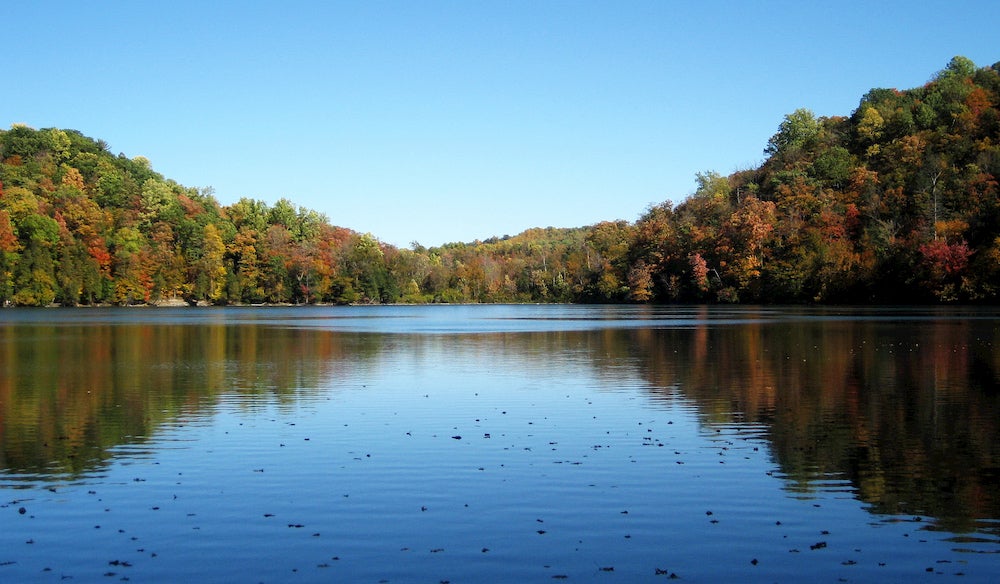
Photo from The Dyrt camper Isabella H.
Further up Chickamauga Lake from Harrison Bay is another great lakefront Chattanooga camping option that is a little less crowded than campgrounds closer to the city. Forty minutes from downtown, you’ll find 32 campsites, a swimming beach, boat launch, bathhouse, dump station and potable water station, Skull Island is certainly a chill place to relax outside— unless you’re easily spooked by the supernatural.
When Chickamauga Dam was built and the valley behind it was flooded to form the lake, the Norman-Eldridge Cemetery was moved here to Skull Island. You might also get a bit of a vibe that you’re in a Speilberg movie or Stranger Things from this campground’s proximity to the Sequoia nuclear power plant. On a clear day you might see the plumes of steam let off from the cooling towers.
“Campground is on a small island with lots of trees, views of river. Good fishing and kayaking but not much else to do on the island itself. Seemed to be a lot of locals, which were good to talk with about what to do in the other nearby parks. Shady campsites but open and not too private.” –The Dyrt camper Dan N.
10. Chester Frost
On the opposite side of Chickamauga Lake from Harrison Bay, Chester Frost is prime Southern lake camping about twenty five minutes from downtown and even closer to some of Chattanooga’s popular family-friendly suburbs. It’s popular with fishermen, families, and folks looking to cool off all summer long. There is an area for day use that has a swimming area, boat ramp, picnic and playground, as well as tent and RV sites. Pack a picnic with some authentic Chattanooga favorites— you can swing by Ankar’s Hoagies and Armando’s on the way in.
“A county park that rivals state or national parks. Every spot is either on the water or close. I don’t care if you want to kayak, fish or powerboat, this is the place for you. Great sites, very good facilities—bath houses, showers and laundry for the campground.” –The Dyrt camper Gregory J.
11. Battlefield Campground RV Park
Besides camping, Chattanooga is incredibly rich in Civil War history. Several major battles took place here, as the Tennessee River, railroad network, and mountain topography made the city strategically valuable to both the Union and the Confederacy. Even the first trolly suburbs within a mile or two of downtown are with a stone’s throw of Civil War battlefields like Orchard Knob Military Park. But one of the most historically significant is thirty minutes due south. In 1863 a major Union victory at Chickamauga Battlefield was declared “the death-knell of the Confederacy.”
Ever since Chickmauga was transformed into a federal military park in 1890, when the new concept of national parks was used to preserve numerous Civil War sites in a burst of reconstruction-era nationalism, it’s been a green space enjoyed by Chattanoogans and visitors alike. Chickamauga Battlefield is laced with hiking and biking trails, not to mention monuments and historical markers. You’ll find joggers, kids testing out their training wheels, a smattering of reenactors and history buffs, and even the occasional ghost hunter trying to find a mysterious being known only as “Old Green Eyes.”
Nearby Battlefield Campground RV Park may or may not count as a haunted campground, but it’s definitely comfortable quarters. There are 50 and 30 amp RV sites as well as tent sites and cabins. Full hookups are available, as well as nice extras like WiFi, horseshoes, playground, laundry, and room for big rigs. Grab a breakfast at The Big Biscuit Barn, a Southern classic and some of the fluffiest, tallest cathead biscuits you’ll find in east Tennessee. Beer fans will love Beverage World, too, where there is a fantastic selection of singles, sixpacks, and growler-fills.
12. Stone Door
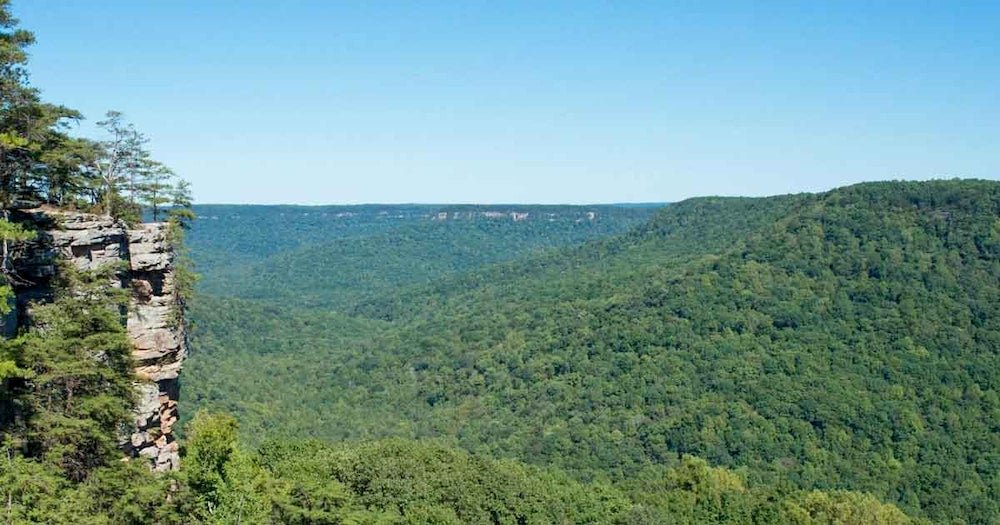
Photo from Tennessee State Parks
Chattanooga camping goes far beyond a thirty minute radius from downtown, however. Up on the Cumberland Plateau an hour and twenty minutes from Chattanooga, Stone Door campground offers more solitude than at the campgrounds closer to town, and more wilderness. This is classic Tennessee gorge camping near Chattanooga on the western edge of the Savage Gulf State Natural Area.
You can hike down through the titular stone door feature and continue on the 55 miles of trails in the park, as well as observe the gorge from above. The Stone Door trail itself is ADA accessible up to a certain point, as are many of the overlooks. This is also a popular destination for rock climbers, with crags at Denny Cove, Foster Falls, and Stone Door. The camping here is fairly primitive, but you’re also close to the Ranger Station should something go awry.
“This is a wonderful spot if you really want to be in nature. Not many people around quite, secluded and very peaceful. Tent camping only with reservations. Lots of hiking nearby and great places to explore.” –The Dyrt camper Sharon H.
13. Savage Falls Camping Area
Savage Gulf is not only popular for serious thru-hikers and climbers, but casual and weekend backpackers as well. The hour drive won’t eat into your time on the trail too much, and the combination of plentiful primitive camping options, longer trails, and non-stop scenery makes this a great place to get your feet wet, test your pack weight, and check your fitness before embarking on longer treks like the Cumberland Trail or Appalachian Trail.
One of the most popular trails for backpackers is Fiery Gizzard, which was rerouted away from private land a few years ago but still is a stunning combination of southern Appalachian forest and butt-busting terrain. Intermediate hikers will be challenged, but also rewarded with a chance to try more technical terrain, cool off in swimming pools, and watch butterflies flitting from the tops of cliffs.
“There were interesting bridges over the water ways, wifi available at the ranger station and quaint camping within an easy walk from the parking lot. I didn’t see another person the whole time I was hiking and camping which is exactly what I was looking for.” –The Dyrt camper Lavender T.
14. Grundy Forest
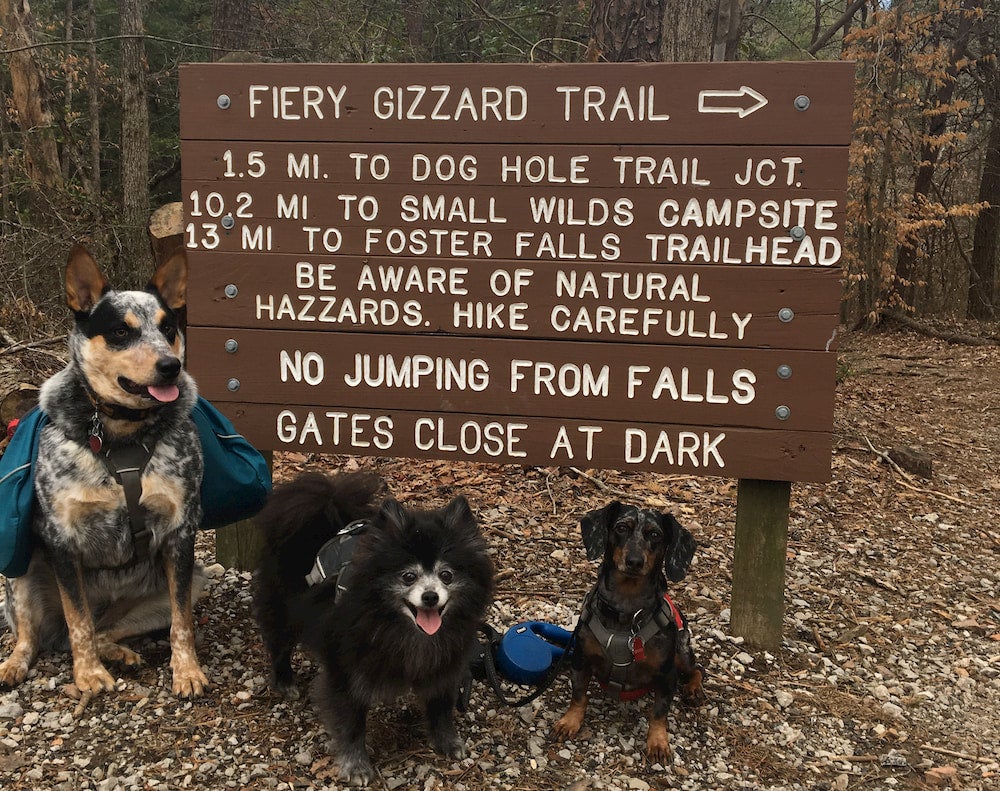
Photo from The Dyrt camper Shelly S.
Connected to Stone Door and Savage Gulf camping areas by the Fiery Gizzard Trail, the Grundy Forest Natural Area is another span of beautiful woodlands on Monteagle Mountain ghat offers Chattanooga camping just an hour from downtown. Closer to Sewanee and the University of the South than to Chattanooga, camping here is nevertheless a great way to spend a weekend outside the Scenic City. And because this site is most popular with backpackers, you might just find yourself with plenty of privacy.
“The primitive campground is close to the parking area at this end. There are several primitive campsites as well as a cabin that can be reserved if you are hiking the distance. The views are AWE-some! The nice thing about the campsite so close to the parking lot is if you are a novice or have kids you get the experience without the distance.” –The Dyrt camper Shelly S.
15. Deer Creek Properties
Looking for a Daniel Boone-esque log cabin getaway near Chattanooga? Look no further than Deer Creek Properties, located in a gated community an hour from downtown, and just minutes from Fall Creek Falls State Park. All cabins are fully furnished, provide hall linens and towels, fire pits and many other amenities. With a community pool and hot tub open from memorial day to Labor Day, ponds for fishing, and a local horse pasture, you’ll live the good life on a cabin camping trip to Deer Creek.
16. Alum Gap
South Cumberland State Park is one of the newest state parks in Tennessee, which is hard to believe given what a treasure this pocket of the Cumberland Mountains really is. Though it’s a distinct state park in its own right, it’s linked to the Savage Gulf trail network by the Fiery Gizzard Trail. Alum Gap is another lovely option for Chattanooga camping, which will not only give you access to trails that connect to longer area treks like Fiery Gizzard, but will also put you in just the right spot to enjoy Upper and Lower Boardtree Falls.
Unlike some of the other camping options in Savage Gulf, Alum Gap isn’t entirely primitive— there’s a small outhouse available. And as long as you have a good water purifier on hand, you don’t have to worry about packing in or caching water— the streams provide plenty. Campers on The Dyrt recommend site #4 for especially nice views of the bluff.
“The Alum Gap campground was a perfect destination for a first-time backpacker. The trail is easy-moderate, mostly flat with only a few inclines. Most of the sites are large, with lots of space to set up camp and hang out, and they’re far enough apart to maintain a decent amount of privacy.” –The Dyrt camper Britany S.
17. Foster Falls
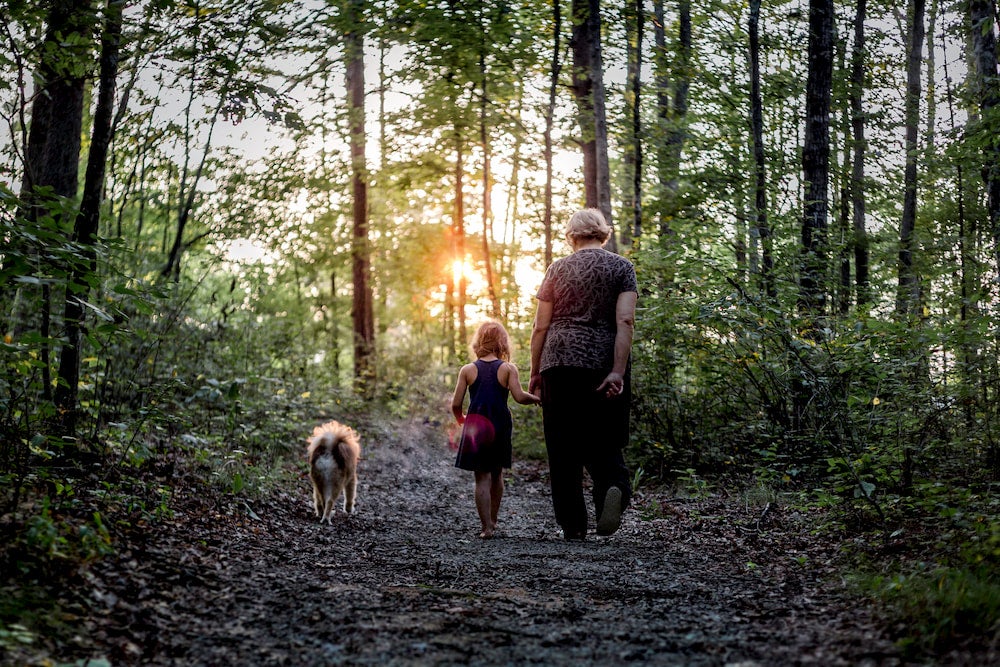
Photo from The Dyrt camper Stephanie J.
Foster Falls is another part of South Cumberland State Park that’s well worth the forty minute drive from Chattanooga to go camping. It’s also an excellent Chattanooga camping destination for climbers, with nice sandstone routes that will challenge a range of abilities. The pool at the bottom of Foster Falls is also a classic Southern swimming hole, perfect for cooling off after an afternoon of overhangs and belaying.
This is one of the larger camping options in Savage Gulf, with 26 sites with picnic tables, concrete pads, bathrooms, and space for tents as well as hammocks. This isn’t the most RV-friendly site, however, with no hookups. That said, you’ll find a lot of climbers, families, and backpackers three seasons out of the year. Be patient if it feels crowded or a little louder than more primitive sites— you’ll quickly see why Foster Falls is so popular.
“Camping was easy and bathrooms were clean. Really beautiful scenery on somewhat strenuous hikes to waterfalls, some good sport climbing, and a few trails that will take you really high up so you can look down at the beautiful green canopy (or orange if it’s fall). Beautiful spot any time of year but we like to go when it’s warm enough to swim in the waterfall.” –The Dyrt camper Kelly M.
Related Campgrounds:
- Clabough’s Campground, Pigeon Forge, TN
- Roan Mountain Campground, Roan Mountain, TN
- Natchez Trace Camping, TN
- River Plantation RV Resort, Sevierville, TN
- Honeycomb Campground, Lake Guntersville, AL
- Deer Creek Tennessee
- Mountain Glen RV Park, Pikeville, TN
Popular Articles:
Articles on The Dyrt Magazine may contain links to affiliate websites. The Dyrt receives an affiliate commission for any purchases made by using such links at no additional cost to you the consumer.

